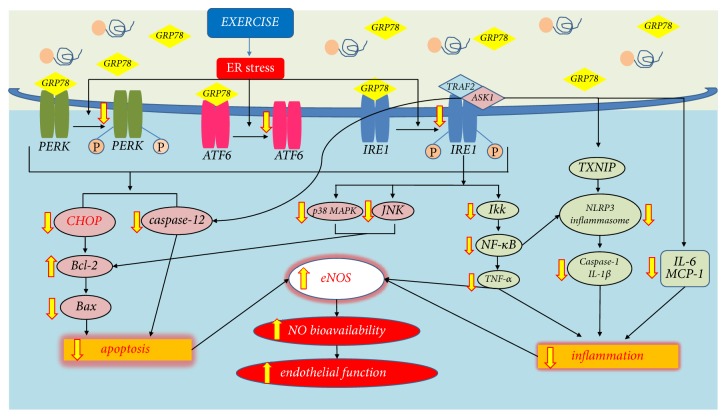Figure 2.
The Chronic effect of exercise on the ER stress-associated apoptosis and inflammation. Regular exercise reduces phosphorylation of the three ER stress sensors and inhibits or decreases ER stress-associated apoptosis and inflammation signaling pathways. Exercise training ameliorates ER stress-mediated CHOP signaling, in turn reducing apoptosis. Exercise training also reduces IRE1α-mediated p38 MAPK/JNK and NF-κB-associated inflammasome regulating the expression of caspase-1, IL-1β, IL-6, and MCP-1, mitigates the IRE1α/TRAF2/ASK1 complex that links to caspase-12, and mediates apoptosis in cardiovascular disease. As a result, these signaling pathways systemically mediate eNOS expression through the decreased apoptosis and inflammation, which increase NO bioavailability and improve endothelial function. The yellow arrows represent the exercise-induced changes in ER stress-mediated apoptosis and inflammatory pathway.

